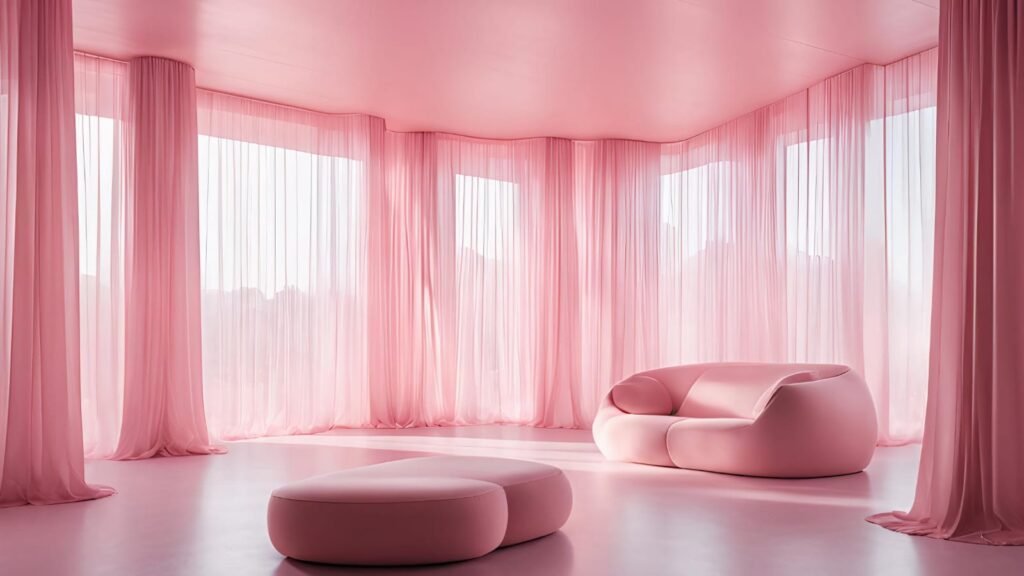In home decoration, the curtain design of the curtains is very important, which extends much beyond window covering. Curtains add character to a room, provide privacy, regulate light and assist in creating atmosphere and design of your living area. Redecorating your house or perhaps furnishing a new one, you cannot go without selecting the appropriate curtain design.
Table of Contents
The Importance of Curtain Design
Not only convertible into functional elements, curtains are style statements. An appropriately selected curtain design is able to:
- ove a small room
- Add heat or coolness with colorCAST
- Manage daylight to create atmosphere or to be energy efficient
- Architectural improvement
- Achieve visual distinction between spaces
Regardless of the interior style, modern, classic, rustic, or eclectic, the design of curtains can become an addition to your overall look as long as they are chosen carefully.
Curtain Designs Types
Curtain styles vary according to the room and the purpose they are to serve. The most popular types of curtain design are the following:
1. Rod Pocket Curtains
They are among the most widespread designs. The curtain rod pocket is made by sewing the top of the fabric. It is basic, conventional and brings out its best in casual or semi-formal occasions.
2. Grommet Curtains
These are also called eyelet curtains and have metal rings at the top through which the rod can go through. They glide effortlessly and have a modern appearance, which would be appropriate in living rooms and bedrooms.
3. Tab Top Curtains
Tab top styles have fabric loops that are simply suspended by the curtain rod. Those suit perfectly well in informal spaces, or in a country-style interior.
4. Pleated Curtains
Pleated curtains (pinch pleats or box pleats), are formal and tailored, and are popular in formal rooms. They use curtain hooks or rings and they tend to look best with layered window treatments.
5. Sheer Curtains
Sheers are made of lightweight fabrics that enable light to pass through and offer modest privacy. They suit very well in living rooms and in Bedrooms combined with heavier draperies.color, pattern, and function of curtains and tips to assist you in making the right choice
Curtain Materials: Selecting the Fabric
The substance not only influences the appearance of the curtain but the performance as well. Some typical choices of fabric are the following:
1. Cotton
Cotton curtains are breathable and easy to maintain; they suit every room. They are available in all sorts of colors and prints.
2. Linen
Linen provides a relaxed and airy appearance, and it is perfect in living rooms and sunrooms. They can however need lining to enhance privacy.
3. Velvet
Velvet is luxurious and heavy, which ensures good insulation and privacy. It can be common in bedrooms and formal dining rooms.
4. Silk
Silk curtains are pretty and glamorous; however, they should only be used decoratively. They are maintenance people and in most cases need lining.
5. Polyester
A wrinkle and shrink-resistant, inexpensive material. It’s magnificent in bedrooms and family rooms.
Colors and Patterns: Creating the Mood
Color and pattern mostly determine the design of the curtains because they create the atmosphere in your room.
Neutral Colors (White, Beige, Gray): They offer a serene, minimalistic background that is compatible with most interiors.
Dark Hues (Red, Navy, Emerald): Dramatic and can serve as accents.
Pastels (Mint, Blush, Sky Blue): They add a sense of softness and are excellent to use in nurseries or in light and airy rooms.
Practical aspects of Curtain Design
Style is great when selecting curtains–function is also important. These are some practical considerations:
1. Light Control
Blackout Curtains: These are best suited to bedrooms and media rooms and prevent most of the external light.Room Darkening Curtains: Darken the room but still have a diffused light. Sheer Curtains: Permit much natural light to enter the room but soften it.
2. Privacy
On windows that open to the street or bathrooms, heavier fabrics or two-layer curtains are more privacy-assuring.
3. Insulation
The curtains can minimize the loss of heat during winter and prevent heat during summer. Thick materials such as velvet or thermally lined curtains are good insulators.
4. Noise Reduction
In cities, where the background noise is louder, heavier curtains can also muffle external noise so they may be worth using in bedrooms or home offices.
Curtain Accessories That Make A Difference
Don’t forget about accessories – they have an impact on the end result of your curtain setup.
Tiebacks & Holdbacks: Tiebacks are used to organize drapes away from your window. Holdbacks are a decorative way to do the same thing.
Valances: Valances are short amounts of fabric that hang at the tops of windows. Valances hide most of the hardware while also adding an element of design and softness to your window treatment.
Decorative Rods: Rods come in wood, metal, and acrylic. The rod can help elevate your window styling.
Final Thoughts
Curtain design goes beyond an ornamental afterthought, it is an important component of the overall appearance and function of a room! The possibilities in curtain styles, fabrics, colors, and accessories can also be as unique as the person’s individual requirements and taste. Since there is such a variety, curtains can deliver warmth, elegance, minimalism, or drama, while at the same time accommodating what is important for your daily life. Take your time in considering all aspects and create a window treatment that reflects not only your taste, but adds more to your life.


